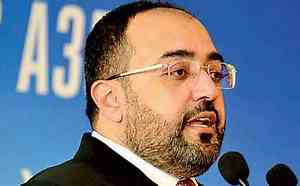
Emirates eyes India-SL route
- CNL Reporter
- May 10, 2025
- News
- Emirates
- 0 Comments
Governments of India and Sri Lanka expected to liberalise direct flight operations for third-party carriers such as Emirates
Emirates has 167 flights to India per week and 28 to Sri Lanka
Proposed 5-year business plan for loss-making SriLankan includes elimination of unprofitable routes, notably 15 Indian routes
By Nishel Fernando
Emirates has expressed its openness to increasing direct flight operations between Sri Lanka and various parts of India while emphasising that the respective governments of India and Sri Lanka need to grant the necessary permissions.
Emirates Senior Vice President West Asia and Indian Ocean Essa Sulaiman Ahamed shared these remarks with Mirror Business at Bandaranaike International Airport this week.
He clarified that it is up to the governments in India and Sri Lanka to liberalise direct flight operations for third-party carriers such as Emirates.
“That’s between the two governments,” he stated.
“We already fly into India. We have 167 flights a week (to India). We fly here (Sri Lanka) 28 flights a week. A significant number of people and airlines, including SriLankan Airlines, IndiGo Airlines and SpiceJet, travel between the two nations,” he added.
Currently, the 167 weekly flights to India and 28 weekly flights to Sri Lanka are facilitated through the existing air service agreements between the two governments. These bilateral agreements govern the permissions for airlines to operate specific routes, outlining the number of flights, destinations and other operational aspects for carriers from both nations. This comes under the Fifth Freedom of the Air.
Speaking to Mirror Business, Civil Aviation Authority (CAA) of Sri Lanka Chairman Sunil Jayarathne indicated the CAA’s support for allowing Emirates to operate direct flights between India and Sri Lanka, noting that the decision ultimately rests with the Indian authorities.
The proposed five-year business plan for the loss-making national carrier SriLankan Airlines includes the elimination of unprofitable routes, notably its 15 Indian routes, which reportedly cost US $ 24 million annually. This strategic move is projected to save US $ 400 million in direct operating costs and US $ 30 million in ancillary expenses per year. If this proposal proceeds, Sri Lanka may need to encourage airlines like Emirates to fill the resulting gap in connectivity.
Granting the Fifth Freedom of the Air between the two countries could increase competition, provide more travel options for consumers and potentially boost tourism, investments and trade between Sri Lanka and India. The reluctance to grant such rights often stems from the desire of national carriers to protect their market share.
However, Ahamed noted that Emirates would first assess the viability of such routes and the level of demand before making any decisions based on approvals.
Meanwhile, he conveyed Emirates’ positive stance towards the implementation of an open skies policy.
“The government has the option to implement an open skies policy, which we generally support, as evidenced by our own operational environment and growth. Regardless of airline ownership, whether public or private, we wish them success because our aim is to offer customers choice. We begin by providing a certain number of daily flights, expanding beyond that as demand increases, creating appealing travel options,” he explained.
Ahamed also mentioned Emirates’ ambition to increase frequencies beyond the current four daily flights to Colombo.
“We currently operate four flights a day and are looking to expand further, which is promising. We do not currently offer flights at intermediate times,” he added.
He highlighted that the introduction of A350, the largest aircraft in the Emirates fleet, to the Colombo route, was a significant milestone.
“We plan to continue updating our fleet with newer aircraft if possible. Currently, we are undergoing a full refurbishment of our Boeing 777 and A380 aircraft, which is a significant step towards future changes,” he further stated.
Commenting on business travel to Sri Lanka, Ahamed noted a discernible increase.
“There’s also a significant number of tourists. We are aware of these trends and are prepared to meet the demand,” he said.
With regard to tourism promotion, Ahamed emphasised that Emirates has consistently partnered with the Sri Lanka Tourism Board since 2022, with annual renewals.
“We are aligned with the government’s objective to promote tourism and remain committed to supporting this initiative. Having been in Sri Lanka for 39 years, we’ve consistently witnessed market growth, particularly with government-backed tourism development, in which we’ve actively participated. Considering airlines have only existed for about 40 years, our 39-year presence here represents a significant period,” he said.

